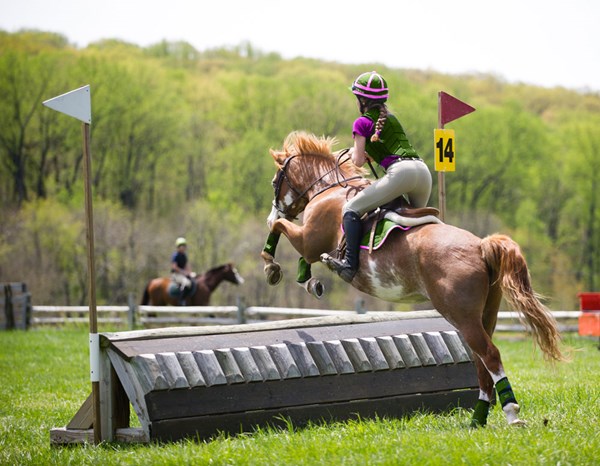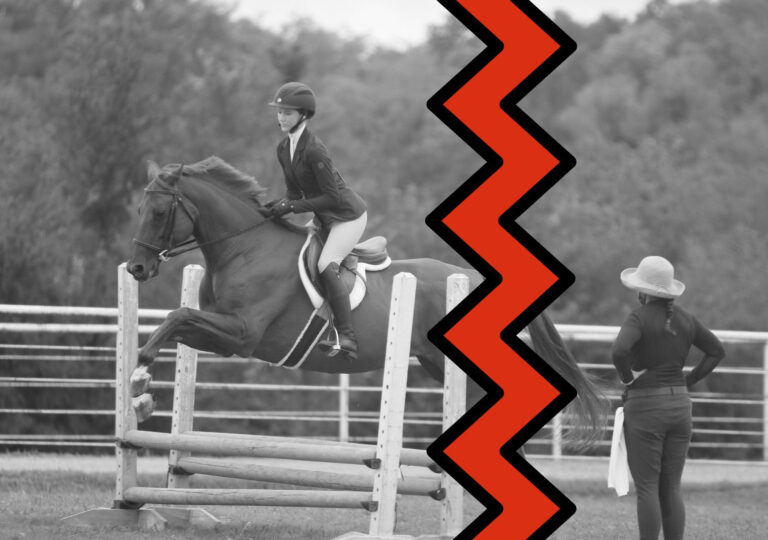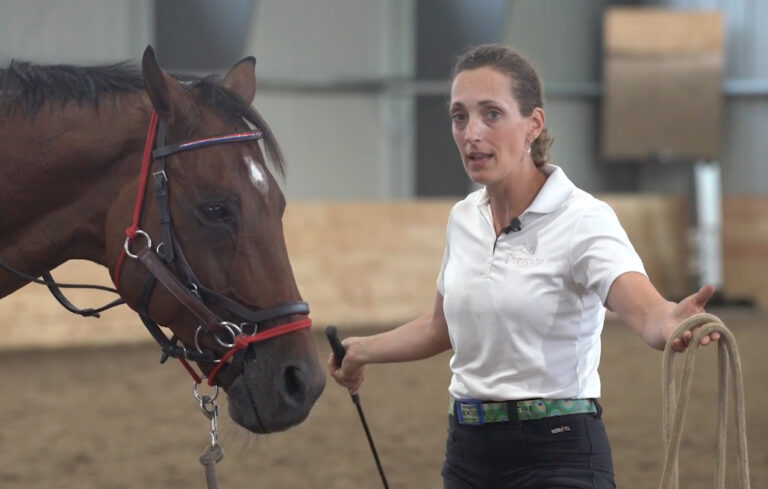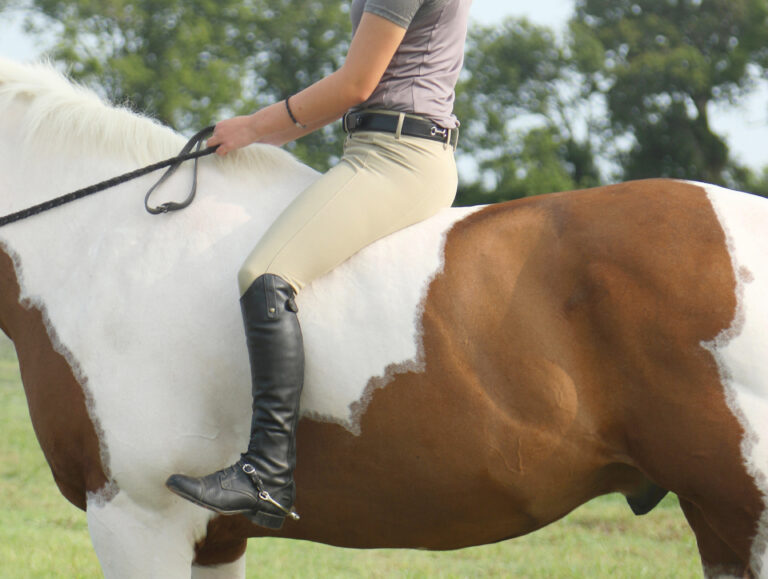
If you are going to go eventing, you are going to need a horse. It will really help your enjoyment of the sport if your horse is suitable, so you want to choose him with care. As I’ll explain, however, what’s suitable for you is a moving target that is dependent on your abilities and aspirations.
Some things to keep in mind when beginning your search for a new horse:
• Eventing is a risk sport, which makes his jumping ability of paramount importance.
• Eventing is a combined sport, which means your new horse will need to be able to do more than one thing well.
At Entry Level
When it comes to matching riders with horses, there is nothing cuter than a young girl with her first pony. She has braces and pigtails, while her 14.2-hand strawberry roan —“Ol’ Strawberry”—has two blue eyes and a nasty buck after a good fence. Tack up this pair in hot-pink everything, including the pom-pom on her helmet, and the picture is complete. Grumpy traditionalists like me may complain in the background about “excess bling,” but Patty Ponycrazy does not care. She loves her pony, and Ol’ Strawberry knows when to jump and more importantly—considering Patty’s fearless attitude toward jumping—when to stop. My point? This horse is suitable for this rider right now.
So much for Patty, at least for the moment. How about the horse who’s suitable not only for eventing, but for you? It makes a difference, for instance, if you are 5-foot-2 or 6-foot-2, and within reason you should choose accordingly. I say “within reason” because a 5-foot-2 rider might be more comfortable on a large pony, but that pony might have trouble galloping on the 12-foot stride universally used by course designers for show jumping and cross-country courses. On the other hand, tall riders can fall into a “bigger is better” mindset and wind up with an 18-hand horse who is broken-winded and broken down. As a general rule, the bigger the horse, the harder it will be to maintain his soundness. However, horse selection is an art, not a science, and experienced horsemen usually want to see the individual horse before they determine the suitability.
Obviously, size matters, but we need to consider other attributes—personality, for example. If you want to jump but you are slightly timid, then a horse with an aggressive attitude probably will carry you in safety and comfort. The other side of this coin is that if you are an aggressive, confident rider, you may do better on a horse with a slightly suspicious attitude toward obstacles of all shapes and sizes.
Once you decide the type of horse who will suit you, you need to determine your goals. If you plan to enjoy the sport as weekend recreation, you can make some compromises. For instance, an amateur rider to whom winning is not the be-all and end-all can tolerate a horse who lacks some natural flair for dressage so long as he is a safe and independent jumper in show jumping and cross country.
As you determine those goals and the horse who will fit them, try to be realistic. If parents tell me their 13-year-old daughter (now at Training level) wants to ride in the Olympics and they are looking at cheap young off-the-track Thoroughbreds, then I know the correct educational path has not yet been established. I hope that 13-year-old rides in the Olympics someday, but right now I want a safe, sensible schoolmaster for her. Every ambitious rider should eventually learn to ride difficult horses, but your entry into the competitive scene should be as safe as possible.
Moving Up
After our sport was changed from the Classic to the short format in 2004, I advised students to look for horses who had excellent dressage paces and were careful over show jumps. I thought we could teach those horses the cross-country work they needed to know. As we gained experience with the new format, however, it became apparent that we had actually created a more dangerous sport that was testing the horses’ jumping skills as never before. Since then, I have gone back to my long-time recommendation: Seek out the best-jumping and -galloping equine athlete you can find, and then evaluate his dressage paces. If you’re looking for competitive success at the upper levels, then he must be a paragon of athletic ability.
Growing up, I was raised on a steady diet of the principles of Col. Harry D. Chamberlin. As the captain of our U.S. Army Olympic teams from 1920 to 1940, he literally wrote the book on riding and training horses. Col. Chamberlin liked horses who were 15.3 to 16.2 hands high with correct conformation.
I often make the point that everything about our sport has changed, but the horse is still the same creature that our grandparents rode and trained. Col. Chamberlin’s chapters on horse selection, conformation and gaits are classics and have not been improved upon in the nearly 80 years that have passed since he wrote Training Hunters, Jumpers and Hacks. Probably his best advice is his comment that we should “Never buy a horse which offends the eye at first glance.”
Once your goals are set and you start your search, you will immediately realize that there is no such thing as the perfect horse. First, you have to establish a sensible price range. While doing this, make sure to consider that horses are an expensive habit. In your budget, you need to include not just the purchase price but also the continuing expenses of board, training, competition and veterinary upkeep.
The veterinary component is important because when Patty Ponycrazy is ready to move up, her perfect transitional schoolmaster after Ol’ Strawberry will probably be a size-appropriate horse with some age—and considerable mileage. Good experience takes its physical toll on horses. If, like her, you are moving up from an entry-level mount to learn the next level, your prospective schoolmaster will most likely have potential soundness issues. At this point, your vet becomes very important to your decision-making. She can give you an estimation of a prospect’s long-term usefulness: “We can live with that condition” or “I don’t think we can live with this.”
Finally, Time for the OTTB
After learning on a reliable schoolmaster, the next stage of Patty’s development, if she is still ambitious, will be learning how to start a young horse. The upper-level potential of the prospect now becomes much more important. (Patty’s parents have probably had that talk about “the real world” with her, asking her when she is going to put her expensive college education to work.) Her next horse will be purchased with the results of her summer jobs, and therefore price becomes an important part of the selection process.
Due to the current economic environment, there are bargains waiting for her at local racetracks, where attractive and athletic horses can be found for less than the airfare to ship a fancy, young warmblood from Europe. However, Patty will need a skilled professional to guide her through her search. Most tracks and racetrack training centers have local professionals who specialize in placing OTTBs in new homes, and Patty should avail herself of their services. The commission she pays will be cheap at the price, if by paying it, she acquires an OTTB that, in addition to being a good eventing prospect, is lightly raced, drug-free and seems to have a calm temperament.
Before purchasing the horse of her dreams, Patty and her adviser will have the horse jogged in-hand, possibly ride him and preferably will expose him to a free-jumping pen. (Keep in mind that horses always jump better at liberty than they will with the weight of a rider on their back.) Hopefully, all of the vet checks are positive, and Patty takes home a 3- or 4-year-old horse whom she hopes is the next Rolex winner.
And speaking of Rolex winners, it will be interesting to see if there is now an influx of OTTBs into the eventing ranks. I say this based on watching the 2014 World Equestrian Games, where it was obvious that success at the elite levels is still based on your horse’s ability to gallop and jump for long periods of time over very difficult obstacles and possibly in less-than-ideal footing.
Over the past two quadrennials (WEG and the Olympics each take place every four years) the average percentage of Thoroughbred blood in successful four-star horses has been about 75 percent, meaning that if you want to be competitive at the upper levels, you need a horse who is at least three-quarters Thoroughbred. The average size of four-star horses is slightly on the increase, which I do not necessarily view as a positive trend. I still believe in Col. Chamberlin’s ideal horse (15.3 to 16.2 hands). Interestingly enough, dressage scores for bigger horses are somewhat better on average, but the final scores are not closely related to size of the horses involved. Elite horses come in all shapes and sizes. It is just up to us to spot them and develop them properly.
In the final analysis, make sure that the horse you choose is suitable for you and your goals and that he is a safe and comfortable ride over obstacles. But if I had to leave you with only one thought, it would be that you should buy a horse whom you fall in love with again every morning when you see his face hanging over the stall door, waiting for breakfast.
About Jim Wofford
Longtime Practical Horseman columnist Jim Wofford competed in three Olympic Games and two World Championships. He also won the U.S. National Championship five times. Additionally he was also a highly respected coach. For decades beginning in 1978, he had at least one student on every U.S. Olympic, World Championship and Pan American team. He passed away February 2, 2023.
This article originally appeared in the February 2015 issue of Practical Horseman.











